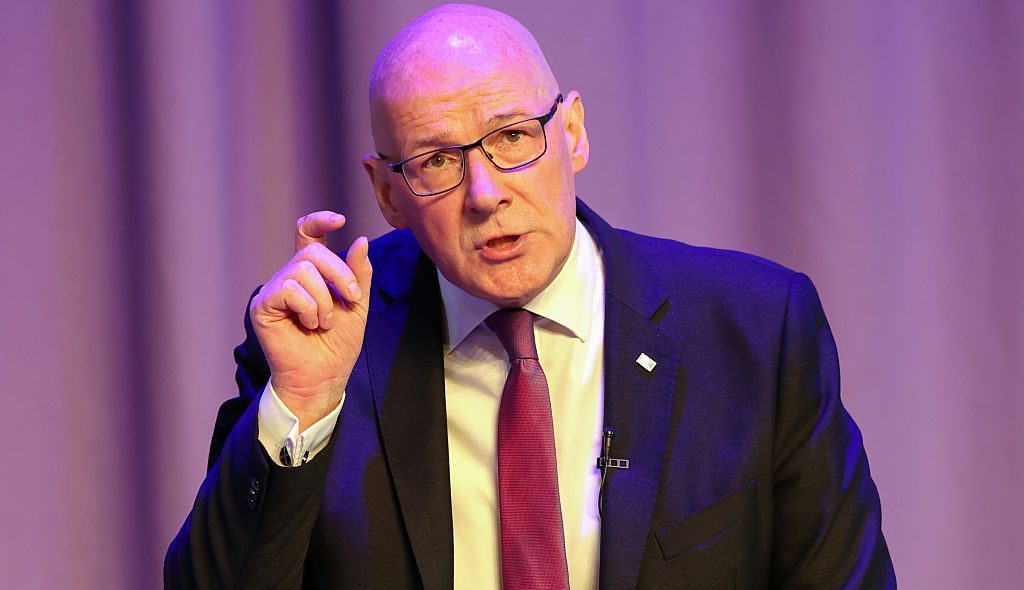Scotland Free in 2050. Free from what, one might ask — but that’s what Scotland’s embattled First Minister, John Swinney, has promised his nationalist followers. Speaking today at the Scotland 2050 conference in Edinburgh, he claimed national liberation is “within reach”. But how?
Swinney’s last big idea was to suggest that last year’s general election could constitute a “mandate” for independence talks if the Scottish National Party won a majority of seats. Apart from making no sense constitutionally, this hostage to fortune left him bereft when the SNP lost 38 seats and his Westminster group of MPs was reduced to single figures.
After that setback, the First Minister appeared to place independence very much on the back-burner. He scrapped his predecessor Humza Yousaf’s post of Minister for Independence and called on his cabinet to build the case for self-government by demonstrating competence in office.
Fortune held that hostage just long enough to demonstrate the SNP administration’s failure across the range of devolved competences. One in seven Scots are now languishing on NHS waiting lists. Health service performance has been worse than south of the border despite more being spent. Education standards are in decline, and the attainment gap between rich and poor students is as wide as ever. Drug deaths, already occurring at three times the rate in England, continue to rise. Public procurement scandals, such as the ferry fiasco, have wrecked any idea that the SNP government is managerially competent.
Speaking today, Swinney said: “I have long believed that Scotland is an afterthought to successive UK governments. Scotland is not on Westminster’s radar in the same way, say, as London, the Midlands or the South East.” But this is disingenuous. Most of the Scottish spending premium is only possible because of fiscal transfers from the UK via the Barnett Formula. Only last week, Chancellor Rachel Reeves announced that Holyrood would receive an additional £2.9 billion per year, taking the total to £52 billion a year by 2029.
Yet Swinney says that “only independence can free Scotland from a broken system and a failing economic model.” If anything has been broken, it is surely the SNP’s reckless spending model, which is unsustainable according to successive reports from Audit Scotland.
The finances of the Scottish administration are in a parlous state, according to the Scottish Fiscal Commission and the independent Fraser of Allander Institute, thanks to the SNP spending billions more than it can afford on welfare and public-sector salaries. Swinney has congratulated himself on paying public-sector workers 5% higher wages than in England. That may go down well with grandees attending the Scotland 2050 conference, but middle-income Scots — who now pay higher income tax for poorer services — are less enamoured with his generosity.
Swinney has been under intense pressure from a discontented party for failing to deliver a credible route to independence, and there has been much talk of an imminent leadership challenge. The recent loss of a relatively safe SNP seat in the Hamilton, Larkhall and Stonehouse by-election was a shock for which the party should have been prepared. Reform UK has been increasing in popularity across Scotland, and support for the SNP in opinion polls has been as low as 32% recently, far below the level required to secure victory in next year’s Scottish Parliament elections.
On Monday, Swinney promised to address the fiscal crisis of the Scottish state by relying on digital technology. Perhaps he should just bring in ChatGPT and let artificial intelligence work out a route map for national liberation. The First Minister certainly needs some intelligent advice.











Join the discussion
Join like minded readers that support our journalism by becoming a paid subscriber
To join the discussion in the comments, become a paid subscriber.
Join like minded readers that support our journalism, read unlimited articles and enjoy other subscriber-only benefits.
Subscribe